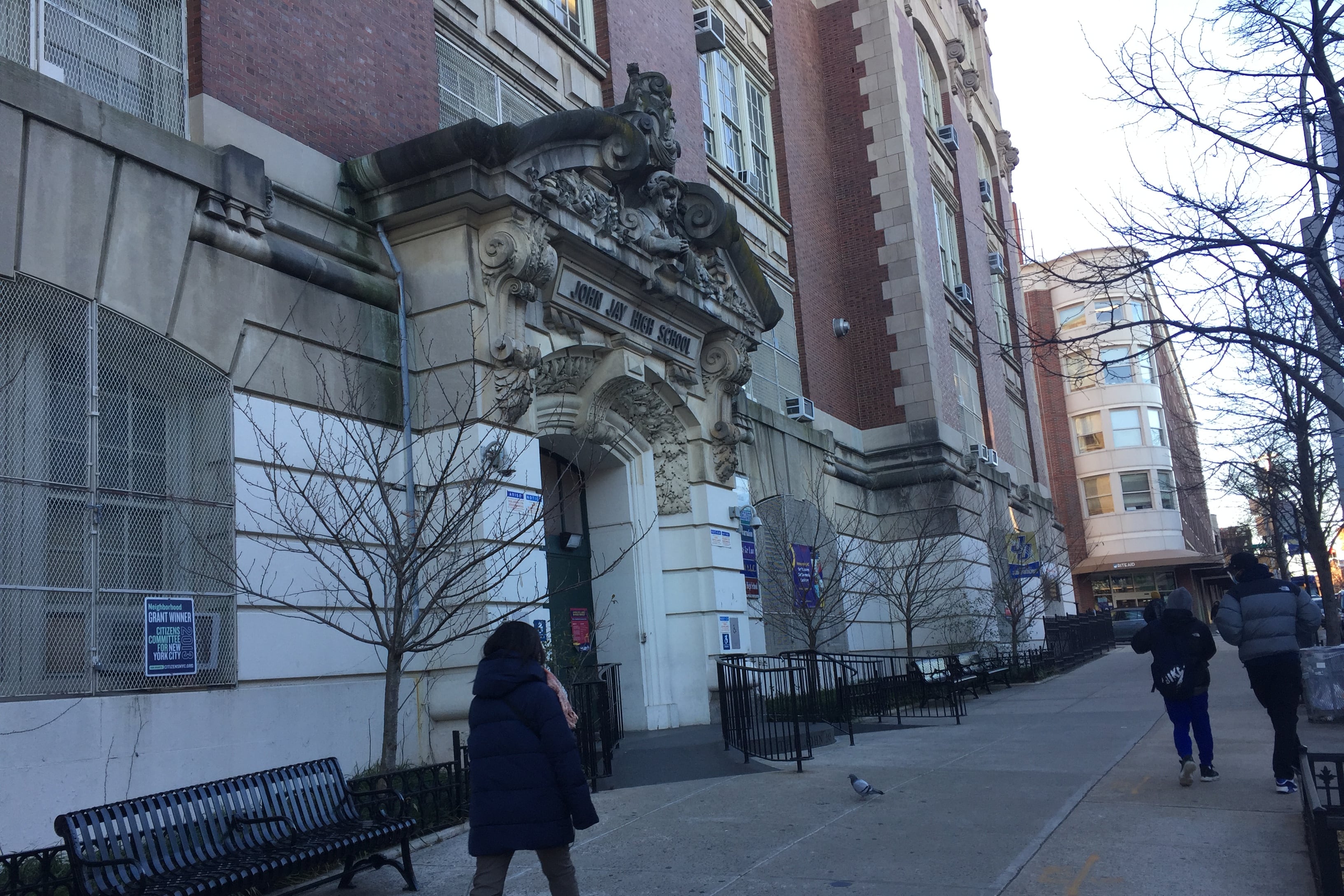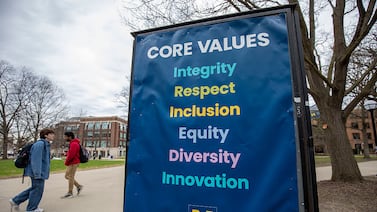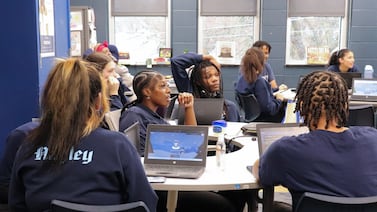The Friday before mid-winter break, one of the city’s most prestigious schools sent stressed-out eighth graders and their families into a tizzy: Weeks after applications opened, NEST+M in Manhattan added new admissions criteria for its high school program, asking students to write two essays.
The move felt jarring because New York City promised to streamline the dizzying process of applying to public high schools this year. But last-minute changes both system wide and at some selective schools have led some parents and advocates to question if the process is actually more fair or easier to navigate. Applications are due March 11, after officials extended the deadline.
“Whatever you can do to help me make more informed choices about where to apply and the chances to get in – I think that’s what’s most missing,” said Jaime Kim, a parent in Harlem who is struggling to whittle down choices for her son, but supports steps to make the process more equitable. “I’m very tempted to take the shorter list I have on my spreadsheet and throw darts.”
Pandemic, focus on segregation force admissions changes
Late last year, outgoing Mayor Bill de Blasio rolled out a series of reforms to high school admissions, a system that has been put under the microscope for years by critics who say the competitive process contributes to the city’s status as one of the most segregated school systems in the country.
All New York City students must apply to high schools, and many of the most sought-after use admissions screens, picking students based on their academic performance. Students who are Black or Latino, those who come from low-income families, have disabilities, or are learning English as a new language are less likely to meet admissions requirements.
This newest batch of changes was meant to bring much-needed transparency to the process by centralizing how students apply to the city’s 400 high schools and creating a uniform rubric for admissions decisions for the nearly quarter of schools that will still use screens. Because of the ongoing pandemic, test scores and attendance weren’t to be factored in, and grades were to be assessed the same way at each school.
‘One step forward, two steps back’
But the process is still far from uniform: A group of more than 20 schools has been allowed to keep their own screens beyond grades, including admissions tests, interviews, and essays. (Admissions to the city’s specialized high schools, meanwhile, remain unchanged.)
“It’s almost like one step forward, two steps back,” said Nyah Berg, executive director of New York Appleseed, which advocates for school integration efforts.
For its part, the education department said it moved swiftly to make changes so families would learn sooner about how their children will be selected for admissions.
“The process this year was released as quickly as possible in order for students and families to be notified about admission decisions before the end of the school year,” education department spokesperson Sarah Casasnovas said in an email.
With a new mayor and chancellor now in office, it’s unclear what direction the city might take in future years. Mayor Eric Adams has been supportive of expanding screened schools, while Chancellor David Banks has called himself “not a big believer” in selective admissions practices. More changes could be in store.
“This administration is committed to engaging and collaborating with students, families, advocates and community leaders on strategies to expand quality accelerated learning opportunities for next year and beyond,” Casasnovas said.
Changes geared toward uniformity
The majority of the city’s high schools don’t have admissions screens. But more than 100 high schools do screen for at least one program. (Schools can have multiple programs that students apply to – in all, there are more than 700 programs.) Students apply to 12 programs, and most students put at least one screened program on their list.
Most screened schools have relied on attendance, test scores, and grades to screen students. Because of the pandemic, attendance and test scores are no longer used. About 86 schools will only use grades in admissions decisions this year, according to the education department. In a big change, they will all use the same rubric, with the scoring being handled centrally by the education department.
Another notable difference this year: Students can use marks from both seventh- and eighth-grade. Typically, applying to high schools happened so early in the school year only grades from seventh grade would be considered.
To make admissions decisions, students will be placed in four different groups, based on how high their grades are. Then the education department will run a lottery for available seats, starting with the first group of students – those with the highest grades.
The new approach may increase the diversity of screened schools. Education department officials said they expect a 13% increase in offers made to Black and Latino students, according to reports. (The education department did not respond to a request for more data about how offers might change.)
“Our admissions process for screened high schools will expand opportunities for accelerated learning this year, particularly for high-achieving students who have been underrepresented historically,” said Casasnovas, the education department spokesperson.
But the change has been met with backlash of parents whose children have the highest grades. In the past, schools that received a crush of applications would pick only those with near-perfect marks. Now, those with a solid B average also have a shot at admissions.
Parents scrambling for information about their child’s chances for admissions under the new lottery system submitted a barrage of public information requests to the education department asking for their child’s lottery number. On Friday, the department announced it would provide all parents with their child’s lottery number through the same online portal used to submit applications.
If it feels confusing to parents informed enough to request records from the education department, it’s even worse for parents without the time, resources, and informal networks needed to stay on top of things, Berg said. She called for more resources to be dedicated to schools to help families sort through it all.
“There’s been a lot of changes for folks to have to navigate while also having to juggle everything else in their lives,” she said. Berg called the city’s reforms “Still not enough.”
Where moves towards streamlining fall short
Things will work differently at schools that will use screens beyond course grades.
In the past, knowing how schools weighed applications was often a mystery, as few schools shared their rubrics for making admissions decisions.
This year, hunting for admissions requirements has gotten a bit easier. The education department launched a single website listing more than 20 schools that use admissions factors beyond grades, such as interviews or essays, along with the rubrics for each of those schools.
Still, this effort at transparency has fallen short, as the city’s list of screened schools has been incomplete and constantly changing.
Last week, for example, the highly sought after NEST+M in Manhattan updated its admissions criteria, asking students to write two essays. Education department officials said the school will contact all students who have already applied to let them know of the additional requirements.
Unlike schools relying on grades to screen applicants, those with additional admissions criteria will still handle the laborious process of sorting through and ranking students. Admissions consultant Elissa Stein, who provides a paid service for families trying to navigate the application process, said it’s often unclear how those decisions will be made, as some schools haven’t shared rubrics.
“It’s all very secretive,” she said.






